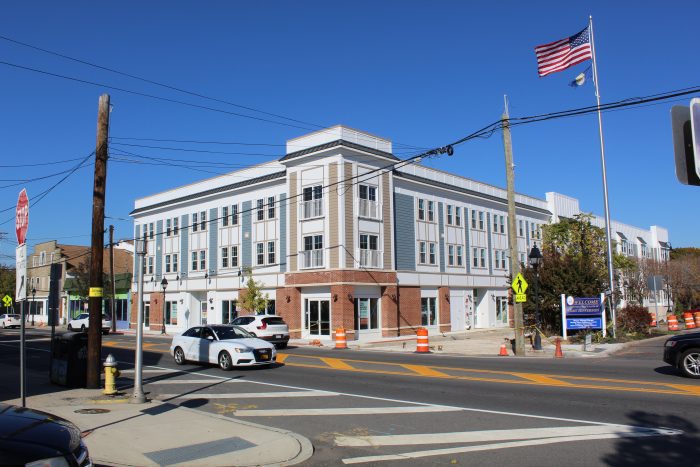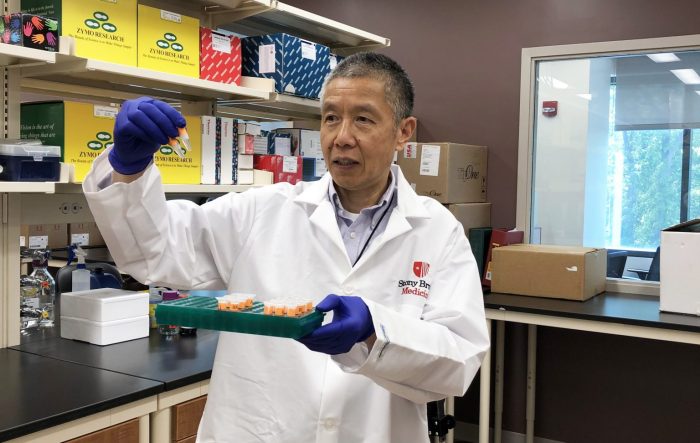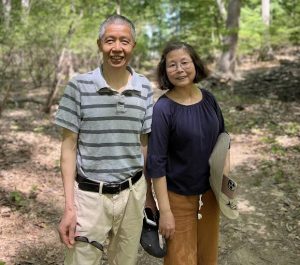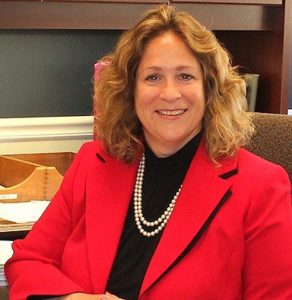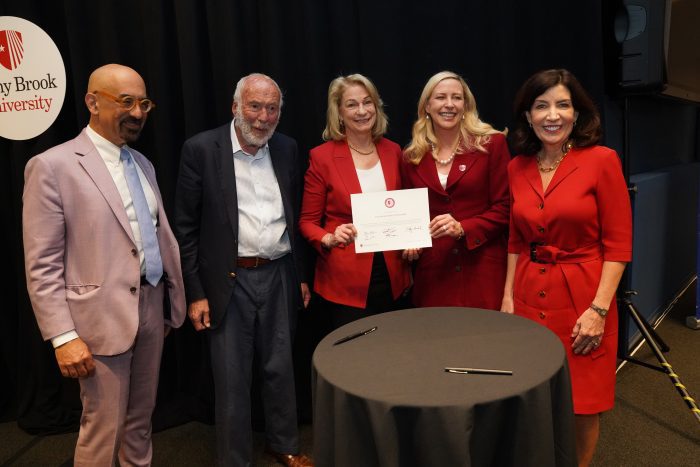Margot Garant, a seven-term incumbent, is stepping down as mayor of the Village of Port Jefferson to head the Democratic ticket for Town of Brookhaven supervisor. In an open contest, trustee Lauren Sheprow and Deputy Mayor Kathianne Snaden are vying to fill Garant’s seat.
Less than a year into her first term on the village’s Board of Trustees, Sheprow, who is running as a write-in candidate as of now, has her sights set on the office once occupied by her father, Hal, who served as mayor from 1977-91 with a one-term break.
In an exclusive interview, Sheprow offered her plans for communications, East Beach, parking and more.
What would be your top priority for the coming term, if elected?
There are several priorities. Fiscal responsibility is number one.
My first step will be to establish a finance and audit committee. In this village, the mayor has decided to be the finance commissioner, but there is no committee assisting the finance commissioner. The finance commissioner is working with the treasurer, and [they are] doing it themselves.
I support creating a committee of CPAs and people who work in finance who can inform our process, coming in with ideas, suggestions and opportunities to shape our budget a little bit differently — a little healthier and more disciplined.
Job two is establishing a board of ethics. It’s something that is highly recommended by New York Village Law.
Another aspect is being resident centric, having two-way communication with the residents. Right now, the two-way communication with the residents is once a month at a [general] meeting [of the village board].
We need a brand-new, professional municipal website. When you use it now, it’s so difficult. If you go to the Town of Brookhaven’s website, it’s so easy to navigate. That’s what I want to see for Port Jeff.
We can also do well to start listening to our chamber [of commerce] members and the Business Improvement District, hearing their feedback. There’s a lot of opportunity for success in how we do business with the merchants.
If elected, how do you intend to help guide East Beach bluff stabilization efforts and maximize the use of the village-owned Port Jefferson Country Club?
When I became a trustee, I was appointed liaison to the food and beverage licensee at the county club. I was interested in improving the relationship with the licensee and the member experience up there.
I started a task force made up of some members and a nonmember resident. We started meeting with management and came up with some real opportunities for improvement.
They changed the menu to be more community and family oriented. We discussed having socials and other events for members, and they ended up implementing that. There are still a lot of challenges that exist with that relationship, but it’s improving because of the task force.
Right now, we’re waiting to hear whether or not we’re getting that federal money [$3.75 million]. There’s some back-and-forth, I think, between FEMA and us.
I’d like to see the tennis program come back — and not just with two courts. I’d like to see six courts, at least, so we can welcome our tennis membership back. I’d also like to see the pickleball program come together and thrive.
What would be the best way to design that? We have engineers draw drawings, but shouldn’t we be relying on a real designer that has worked on country club designs before?
Let’s get someone in there who knows what they’re doing, looking critically at the space they have to work with and making the best recommendations based on their experience with other facilities.
What is the role of the village board in overseeing new developments and redevelopment projects?
The first thing we should do is hire a planner. We need a senior planner who can advise, direct and inquire. I’m not an engineer, architect or planner. But there are some very good engineers, architects and planners out there, and we need them on staff. It is our role to hire those positions.
I think we can commission a study to look at open space. How would you treat green space? You first have to understand what green space actually exists, and then get our planner and engineer to take a look at how to address these things.
The opportunities are there. We need to understand what they are and then get the advice of a senior planner to figure out how to move this village forward.
How can the village alleviate its parking capacity challenges, balancing the competing interests of residents, businesses and tourists?
I’ve been speaking with business owners, restaurant owners and residents, and there is a strong need for a parking committee. We need to understand what the business owners are seeing, hear their feedback and try to act upon it.
The parking committee should be made up primarily of business owners, but you also need residents who can weigh in on aesthetics and real-world experiences.
We also have to look at building a parking structure. They have parking structures that are architecturally appealing and can adhere to the architectural integrity of the community. That’s a design element, but the question of where comes into play.
If a big decision is to be made about a parking garage, then residents need to be heard on that.
What is your preferred method for public engagement?
I’m enjoying the face-to-face connections with people. I’m learning so much about the village, and people are so open to speaking with me right now. That’s my favorite way to communicate with people and engage.
If we have messages that we need to communicate in a broader sense, an upgrade to our website is essential. Sharing information through The [Port] eReport is good — it’s a good resource. But, again, it’s talking at people, not listening to people.
I feel we need to start suggestion boxes, surveys and phone banking. We need a community relations effort that hasn’t existed since I’ve been around.
All these things — code enforcement, parking, engagement with the school district — are all community relations functions that, if we do well, we’ll have residents feel they’re listened to and have a responsive government. That’s the goal.
What is your professional background, and how does it apply to the role of a village mayor?
I have been a public relations professional for pretty much my whole career. My most recent position was as the chief media relations officer at Stony Brook University, where I worked for 16 years. Prior to that, I was the public relations director at Mather Hospital for four years.
I consider my experience at Stony Brook the most illuminating. Stony Brook is a campus of about 44,000 people between students, staff and hospital employees. They have all of the infrastructure that a municipality has.
As I was working at Stony Brook, I was responsible for communicating a lot of the things that were going on at campus to the media. Everything that I was involved with there and helped communicate is very similar to what is happening in the Village of Port Jefferson. It’s similar in scope — Stony Brook was just much greater in size.
While at Stony Brook, I interacted with representatives from the federal, state, Suffolk County and town governments, building a lot of relationships with people in those jurisdictions. I was privy to how they did business and operated, so I feel very prepared.
Editor’s note: This interview was conducted before the Suffolk County Board of Elections removed Sheprow’s name from the mayoral ballot May 30. See story, “Suffolk County elections board removes Port Jeff mayoral candidate from ballot.”
Note to our readers
We intend to interview each of the declared candidates for village office, starting with those running for trustee, then mayor. In keeping with past practice, we first interview incumbents seeking reelection, followed by nonincumbents, selected alphabetically.



